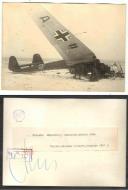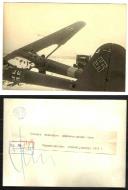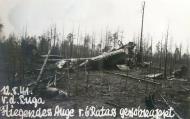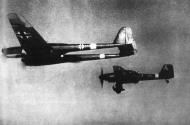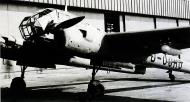|
| Role:- Tactical Reconnaissance and Army Cooperation Aircraft, Light Bomber |
| Manufacturer:- Focke-Wulf |
| Designer:- Kurt Tank |
| First flight:- July 1938 |
| Introduction:- August 1941 |
| Retired:- 1945 |
| Primary users:- Luftwaffe, Hungarian Air Force, Slovak Air Force |
| Produced:- 1940–44 |
| Number built:- 864 |
History
The Focke-Wulf Fw 189 Uhu (translated to'Owl') was uniquely designed for the German Luftwaffe in WWII, and carried out several roles. It was mainly used on the Eastern Front against Soviet forces, where it was used in a short-range tactical reconnaissance role with limited usage in a nightfighting capacity. In all, the 848 examples would produce several variants, each with specialized changes and modifications to suit required roles. The Fw 189 was of a twin-engine design, made up of a long-spanning wing element and twin booms. The Fw 189 system was crewed by three personnel (consisting of the pilot and two gunners) positioned in a cockpit sitting high above and between the engine booms featuring a nearly all-glazed greenhouse-type design. One gunner manned a twin barrel dorsal machine gun mounting and the other a twin-barrel machine gun mounting in a tail cone turret assembly. Additionally 441lbs could be carried on the wing hard points
The real dedicated role of the Fw 189 was as a reconnaissance aircraft and the systems were fielded en masse against the Soviets. Though range limited the system to just 416 miles, no fewer than 30 Fw 189's were converted to the nightfighter role to combat light Soviet fighter incursions occurring on a regular basis along the front. In all, the Fw 189 maintained a successful service record and played an important - albeit limited role - in the Eastern Front offensives.
Design and development
In 1937, the German Ministry of Aviation issued a specification for a short-range, three-seat reconnaissance aircraft with a good all-round view to support the German army in the field, replacing the Henschel Hs 126, which had just entered service. A power of about 850–900 hp (630–670 kW) was specified. The specification was issued to Arado and Focke-Wulf.[1]
Arado's design, the Ar 198, which was initially the preferred option, was a relatively conventional single-engined high-wing monoplane with a glazed gondola under the fuselage.[2]
Focke-Wulf's chief designer Kurt Tank's design, the Fw 189, was a twin-boom design, powered by two Argus As 410 engines rather than the expected single engine and a central crew gondola designed with a heavily glazed and framed "stepless" cockpit forward section, which used no separate windscreen panels for the pilot (as with many German medium bombers), while Blohm & Voss proposed as a private venture something even more radical: chief designer Dr. Richard Vogt's unique asymmetric BV 141. Orders were placed for three prototypes each of the Arado and Focke-Wulf designs in April 1937.[3]
The Fw 189 was produced in large numbers, at the Focke-Wulf factory in Bremen, at the Bordeaux-Merignac aircraft factory (Avions Marcel Bloch's factory, which became Dassault Aviation after the war) in occupied France, then in the Aero Vodochody aircraft factory in Prague, occupied Czechoslovakia. Total production was 864 aircraft of all variants.[4]
Operational history
Called the Fliegende Auge ('Flying Eye') of the Wehrmacht Heer (German army), the Fw 189 was used extensively on the Eastern Front with great success. Its Soviet nickname (in both Ukrainian and Russian) was 'Rama' (Frame), referring to its distinctive tail boom and stabilizer shapes giving it the characteristic quadrangular appearance. Despite its low speed and fragile looks, the Fw 189's manoeuvrability made it a difficult target for attacking Soviet fighters. When attacked, the Fw 189 was often able to out-turn attacking fighters by simply flying in a tight circle into which enemy fighters could not follow.
Variants
The main production model was the Fw 189A reconnaissance plane, built mostly in two variants, the A-1 and A-2. Unless otherwise stated all aircraft were powered by two Argus As 410 engines of 465 PS (459 hp, 342 kW).
Fw 189 A-0: 10 pre-production aircraft for operational tests and trials.
Fw 189 A-1: Initial production version, armed with two flexible 7.92 mm (.312 in) MG 15 machine guns in the dorsal and rear positions, one 7.92 mm (0.312 in) MG 17 machine gun in each wing root, plus four 50 kg (110 lb) bombs. It could carry an Rb 20/30 or an Rb 50/30 aerial camera.
Fw 189 A-1 trop: Tropicalised version of the Fw 189 A-1, fitted with air intake filters and survival equipment. Conversion from A-1s.
Fw 189 A-1/U2: VIP transport version of the Fw 189 A-1.
Fw 189 A-1/U3: VIP transport version of the Fw 189 A-1.
Fw 189 A-2: The flexible MG 15s were replaced by twin-barrel 7.92 mm (0.312 in) MG 81Z.
Fw 189 A-3: Tropicalised production version of the Fw 189 A-2, fitted with air intake filters and survival equipment.
Fw 189 A-4: Light ground-attack version, armed with two 20 mm MG 151/20 cannons in each wing root, fitted with armour protection for the underside of the fuselage, engines and fuel tanks. No production known.
Fw 189B: The Fw 189B was a five-seat training aircraft; only 13 were built.
Fw 189 B-0: Three pre-production aircraft.
Fw 189 B-1: Five-seat training version. 10 built.
Fw 189C: The Fw 189C was conceived as a heavily armoured ground-attack, close-support variant, in competition with the Henschel Hs 129. But its two prototypes (V1b and V6) were not satisfactory, and it was not produced.
Fw 189D: Proposed twin-float trainer floatplane. Not built.
Fw 189E: Prototype only, powered by two 700 PS (690 hp, 515 kW) Gnome-Rhone 14M radial engines.
Fw 189 F-1: Re-engined Fw 189 A-1 aircraft, powered by two 600 PS (592 hp, 441 kW) Argus As 411 engines.
Fw 189 F-2: Fitted with electrically operated landing gear, increased fuel capacity and additional armour plating, powered by two 600 PS (592 hp, 441 kW) Argus As 411 engines.
Blohm Voss BV 141B10 V18 Stkz NC+RI WNr 0210010 01
The Blohm & Voss BV 141 was a tactical reconnaissance aircraft. It is notable for its uncommon structural asymmetry. Although the Blohm & Voss BV 141 performed well, it was never ordered into full-scale production, for reasons that included the unavailability of the preferred engine and competition from another tactical reconnaissance aircraft, the Focke-Wulf Fw 189.
(Color by Nikos)
Operators
Germany:- Luftwaffe
Bulgaria:- Bulgarian Air Force
Hungary:- Royal Hungarian Air Force
Norway:- Royal Norwegian Air Force (Postwar)
Romania:- Royal Romanian Air Force
Slovakia:- Slovenské vzdušné zbrane, Slovak Insurgent Air Force
Surviving aircraft
One Fw 189 survives today. Its story starts on May 4, 1943 when Fw 189 V7+IH (Werk Nr. 2100), of 1./Nahaufklärungsgruppe 10, with V7 originally the Geschwaderkennung code for Heeres-Aufklärungsgruppe 32 based at Pontsalenjoki (due east of Kuusamo, and within the south-central area of modern Russia's Republic of Karelia) took off on a mission to photograph the Loukhi-3 airbase from an altitude of 6,000 m (20,000 ft), then to continue north along the Murmansk-Leningrad railway. Approximately 31 minutes after taking off, V7+IH was attacked by Lend-Lease-acquired Soviet Hawker Hurricane fighters. The aircraft dived to escape the fighters, but owing to damage already suffered, could not pull out in time, and it struck the treetops. The tail was torn off, and the crew nacelle left hanging upside down within the trees. The pilot, Lothar Mothes, survived but one crewman was killed in the crash and the third died from blood loss as a result of a severed leg. Incredibly, Mothes was able to survive two weeks in sub-zero temperatures, evading Soviet patrols while eating bark and grubs as he walked back to his base. Mothes spent the next nine months in a hospital recovering from severe frostbite before returning to the front line, eventually to fly another 100 missions.
In 1991, the wreckage of V7+IH was found in the Russian forest where it had remained for 48 years. The aircraft was purchased by a group of British aircraft enthusiasts and was shipped to the UK, arriving in the town of Worthing, West Sussex in March 1992. The Focke Wulf 189 Restoration Society was formed to restore the aircraft to flying condition. Her former pilot, Lothar Mothes, met up again with his aircraft at the 1996 Biggin Hill Airshow.
It was reported that this aircraft was acquired by Paul Allen’s Flying Heritage Collection however its current state is not publicly known.
 Editor for Asisbiz: Matthew Laird Acred
Editor for Asisbiz: Matthew Laird Acred
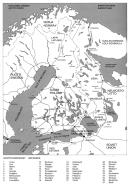



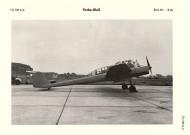

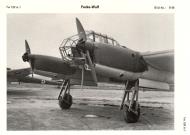


.LG2-FFS-Brandenburg-Biest-2.BFS2-identification-card-ebay-01.jpg)

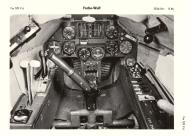

.32-V7+1F-WNr-2100-Finland-Apr-1943-0A.jpg)

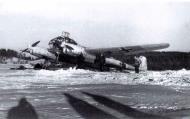


.12-Eastern-Front-1943-01.jpg)


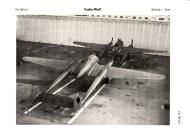







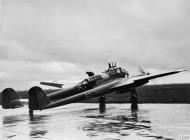

10-T1+GM-Tannenberg-Saxony-Germany.jpg)


